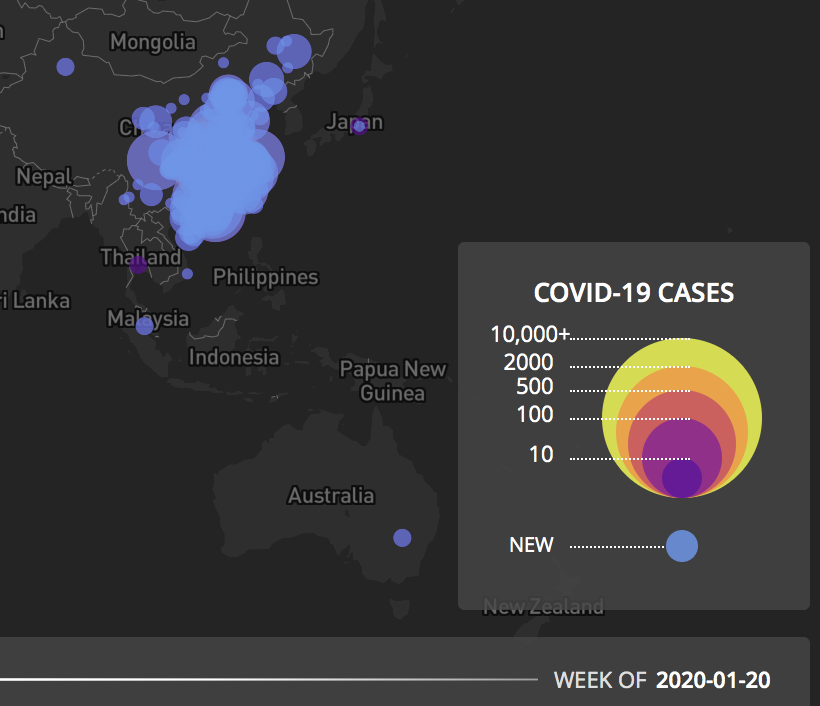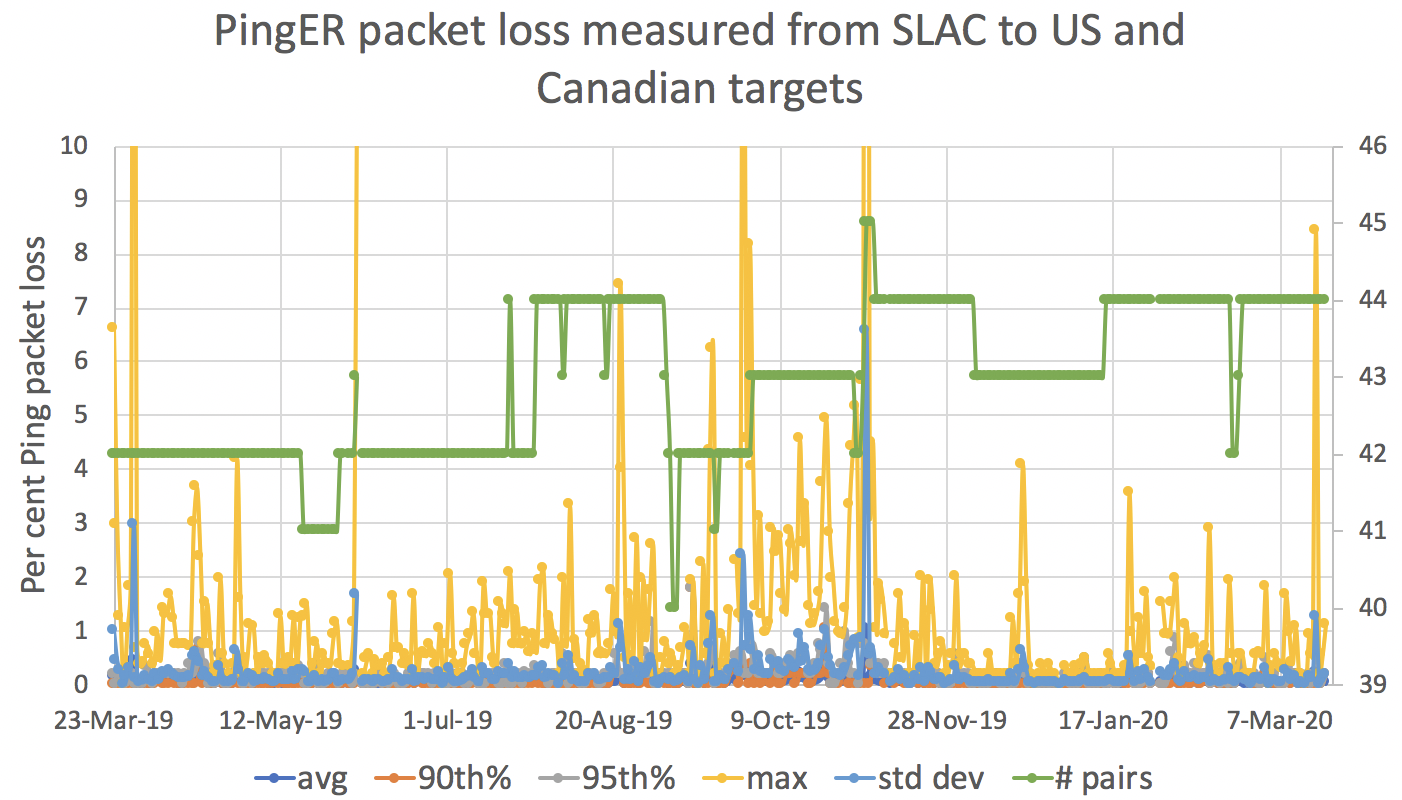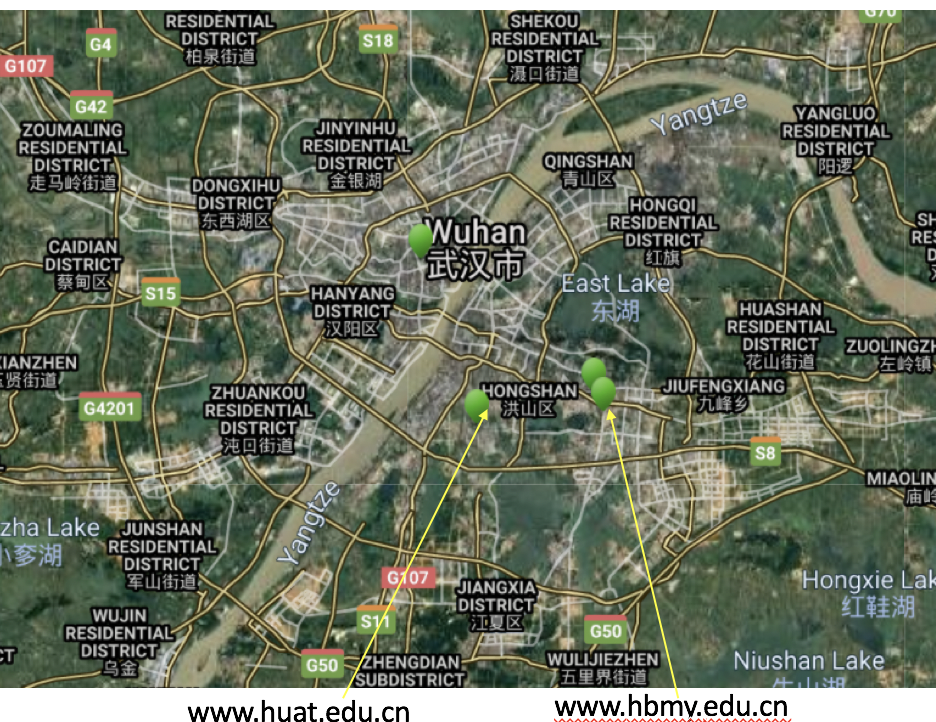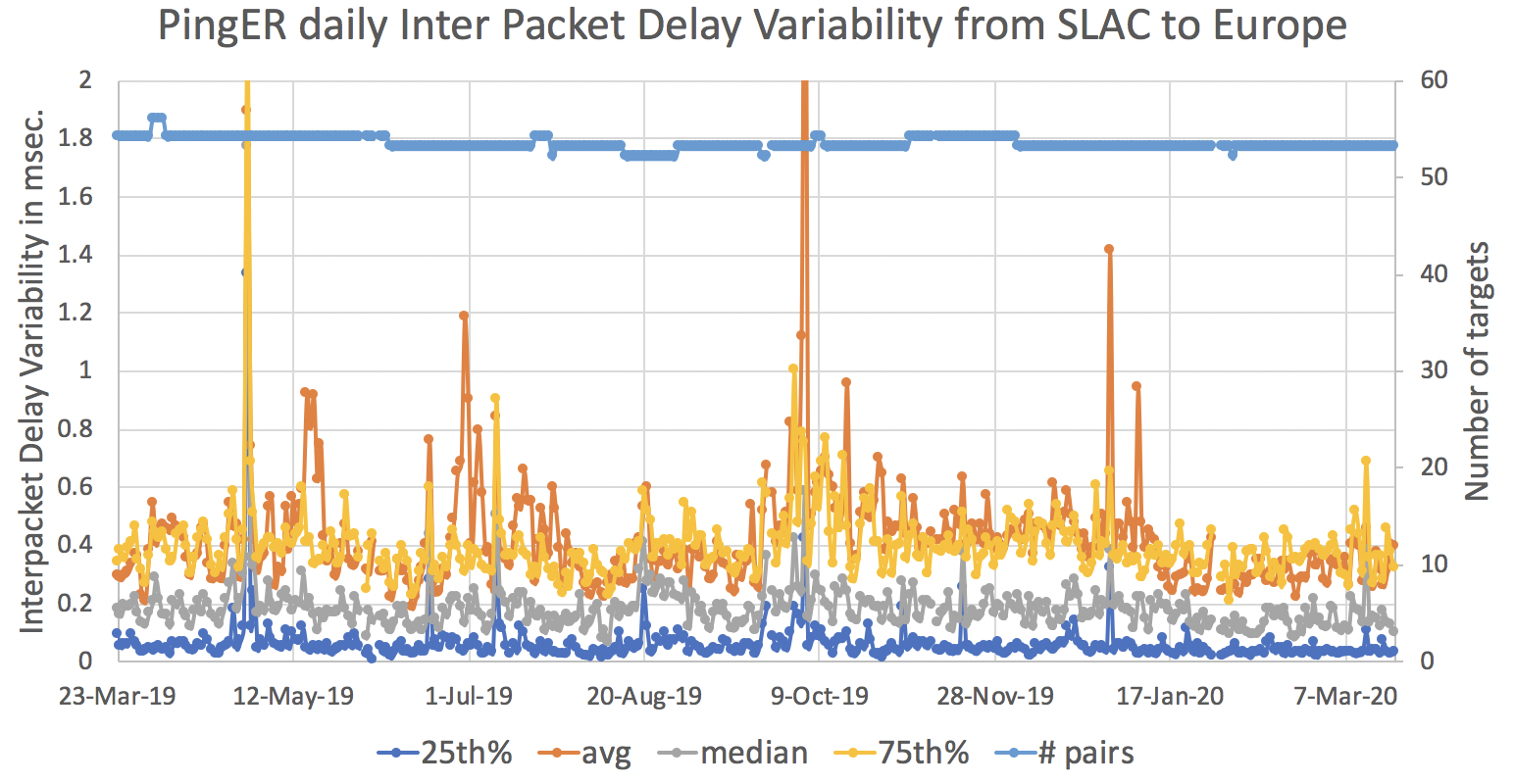| Table of Contents |
|---|
Introduction
This addresses the question of whether the PingER data can identify the impact of COVID-19 on the Internet. According to https://thrivenextgen.com/covid-19-impact-on-internet-performance/ Most Internet Service Providers (ISPs) oversubscribe their bandwidth and networks as typical inbound and outbound traffic are bursty and often don’t sustain high levels on a continuous basis. Fortunately, most of the larger National Providers have had sufficient time to prepare for the impact of COVID-19 and plan for the possibility of business workloads shifting to the home. Regardless of this capacity planning, Internet traffic patterns are about to change drastically based on schools across the country opting for virtual learning and business work from home migrations. Also, Time Magazine April 5/ April 15, 2020, reports that "traffic worldwide is up 35%...Demand is highest in the evening in the past two weeks, says networking firm Century Link."
...
- For Europe, US and Canada the Christmas/New Year season (end November thru 2nd week in January) may also be expected to change behaviors, so comparing with data before the first cases (Nov-Jan) may be tricky.
- Also the measurements are from SLAC which shutdown on March 17th, 2020, so the traffic on its links may have dramatically decreased after that.
- The links from SLAC use the well-provisioned ESnet network and beyond that academic networks such as Internet2 in the US, GEANT in Europe, APAN in Asia so the measurements from SLAC may not be fully representative.
- Many of the targets are academic establishments that may have been closed, thus the target itself may be lightly loaded and so respond more quickly than in the past.
Milestones and Statistics
The milestones, for the virus itself, include 1st identified case, 1st hospitalization, 1st community case, 1st death.
...
- Number of days to double cases
- Basic reproduction number R0 the average number of secondary infections produced by an infectious case where everyone is susceptible.
- For R >1 each individual infected by a transmissible disease is expected to infect a number of individuals that increase exponentially. For R< each case transmit the disease to less than one individual and the disease dies out.
- Control reproductive number RC, the value of R in the presence of control measures.
- Incubation period
- Risk of importation
- Prpjections Prpections on: all beds needed, ICU beds needed, invasive ventilators needed.
...
We can cut and paste this table into Excel to enable further analysis and visualization. Also the summary data is analyzed on a regular basis and the results made available as CSV files at https://www-iepm.slac.stanford.edu/pinger/prmout/. The file names (e.g.average_rtt-EDU.SLAC.STANFORD.PINGER-continent-allmonthly.csv) provide the metric (average_rtt in example), the Monitoring Agent (EDU-SLAC.STANFORD.PINGER in example), the region (continent or country) and the time window of each data point (or Tick, e.g. monthly (=last 12 months), allmonthly, or allyearly).
Impact by region
China and North America
Looking at the plot of daily average RTTs there is a peak (going from 145ms to 160ms) in minimum (average RTT) from Jan 10 to Jan 24th 2020, plus another spike on Feb 19.
A similar result is seen for the daily minimum RTTs.
Currently I do not know why we see these bumps or what they are telling us.
Looking at the Inter Packet Delay Variation (IPDV, ) a measure of the variability between adjacent ping packet RTTs there is some evidence that the variability reduced between 18th Jan and March 10th 2020. The first person in China to die of the COVID-19 virus was reported on January 10th, and by January 31st there were 9,720 cases in China. Looking in more detail at the Healthmap one sees
Looking in more detail at the Healthmap one sees the dramatic spread of the virus in China between January 13 and January 20, 2020. Thus the drop in IPDV RTTs may indeed be linked to the impact of the growth of COVID-19 infections in China.
| January 13, 2020 | January 20, 2020 |
|---|---|
I can see nothing similar when looking at the US and Canada (N. America) IPDV data, maybe the effect is later in the evolution of the virus' impact.
Aggregating the IPDV data monthly for China we see the following where we show the median together with the 25% and 75% going back to September 2017:
Looking at the percent packet loss for China there may be some evidence for a change in the 75%. Thus the impact is seen for a few sites. However, the climb started in August-September 2019 so it is doubtful it is related to COVID-19. This conclusion is confirmed by looking at the monthly aggregates.
For the US and Canada the losses are lower and usually 0% (typically >=90% of the targets show no losses), so instead we show the average maximum losses
PingER monitors two hosts in Hubei: www.hbmy.edu.cn at Hubei University for Nationalities and Hubei University of Automotive Technology and www.huat.edu.cn at the Hubei University of Automotive Technology. The locations of the two Universities is shown below.
The hourly measurements for www.hbmy.edu.cn and www.huat.edu.cn are shown below (one can use the form https://www.slac.stanford.edu/cgi-bin/ping_data_plot.pl to create such a plot).
In general there are marked diurnal changes. There is a slight increase in RTTs following the Chinese New Year January 25th 2020. Then there is a small step reduction in RTTs March 10, 2020, followed by an increase in the packet losses starting March 18th 2020.
| PingER average hourly RTT from SLAC to Hubei University for Nationalities | PingER percent hourly packet loss from SLAC to Hubei University for Nationalities |
If we look at the daily aggregates for the packet loss per cent, average RTT and Inter Packet Delay Variation www.hbmy.edu.cn and www.huat.edu.cn from 3/23/2019 thru 3/21/2020 and then expand to see the subset from 1/1/2020 thru 3/21/2020 we get the plots below.
Note that www.
It is clear that there are huge variations in the measurements over the last year. Looking at just 2020 data there does appear to be evidence for an almost factor of 2 change in the IPDVs towards the end of January, in opposite directions for the two hosts. N.b we might expect to see something following the January 23rd lockdown of the Wuhan region. There is a "flutter" in the IPDV around that time, whether it is related to the shutdown is unclear.
Looking at the aggregated monthly IPDVs for the two hosts we see:
Europe
Italy
Italy jumped from three incidents on Friday, February 21 to 229 by the time of WHO’s February 25 situation report
For Italy, PingER monitors 7 hosts. They are in Bologna, Udine, Rome, Pisa and Frascati. These are not the hardest hit areas (see here).
After removing one (vr1dx.fisica.uniud.it) which stopped responding on February 20, 2020 the IPDV for each of the Italian hosts appears as below:
There appears to be a dramatic drop in the IPDV for the target host speed.unidata.it in Bologna between the end of January and Feb 19th. Italy's first COVID-19 case was announced February 19th, thus it is doubtful this drop has anything to do with COVID-19.
A lockdown began for Northern Italy on March 8th and extended to all Italy on March 9th. A plot of the daily IPDV measured from SLAC to 6 Italian hosts together with some COVID-19 milestones is shown below. The milestones are 17 cases diagnosed Feb 21 (including first local transmissions) and 225(105 new) Feb 25. The progress of COVID-16 in Italy can be seen here. There are 6 Italian hosts being monitored from SLAC the values shown are the 25%, median and 75% of the daily IPDV measured for the 6 hosts for the given days.
Spain
There are 4 hosts in Spain monitored by SLAC www.ciemat.es and www.uam.es are in Madrid, speedtest.serevihost.es is in Elda in the province of Alicante in Eastern Spain, and www.ipv6tf.org.
For Spain:
- Self isolation was mandated March 17
- Social distancing was encouraged March 9
- Public events were banned March 14
- School closure was ordered March 13
- Lockdown was ordered March 14.
Using Motion Charts to look at PingER data versus Covid cases
Another attempt to correlate the impacts might be to use a Motion Charts tool to look for correlations between say Covid-19 cases (cases, hospital admissions, deaths etc) and PingER metrics as a function of time, by country, continent, plus population or density of population. The idea is that as Covid-19 cases pass say 100, the country will impose interventions such as school closing, social distancing etc. which will change the usage patterns of the Internet which may have noticeable impacts on the PingER measurements.
See Using Chart.ca and an example.
| PingER Metric | Covid-19 Confirmed | Covid-19 Deaths |
|---|---|---|
| ipdv | https://charteca.blob.core.windows.net/pubs/PGkmEfrvMDMCDMZy | |
Using Motion Charts to look at PingER data versus Covid cases
One attempt to explore and correlate the impacts is to use a Motion Charts tool to look for correlations between say Covid-19 cases (cases, hospital admissions, deaths etc.) and PingER metrics as a function of time, by country, continent, plus population or density of population. The idea is that as Covid-19 cases pass say 100, the country will impose interventions such as school closing, social distancing etc. which will change the usage patterns of the Internet which may have noticeable impacts on the PingER measurements. We use the PingER 'Lasat120days' data measured from SLAC as provided and updated daily in https://www-iepm.slac.stanford.edu/pinger/prmout/. The data is available by metric, country Monitoring Agent (in this case pinger.slac.stanford.edu)' as Excel csv files, e.g. ipdv-EDU.SLAC.STANFORD.PINGER-country-last120days.csv. By means of a script covid.pl we create Excel csv files available at https://www-iepm.slac.stanford.edu/pinger/covid/ by PingER Metric and Covid-19 Confirmation cases and deaths, e.g. ipdv-confirmed.txt. These covid/ files are suitable for copying into www.charte.ca to create motion charts for selected Pinger metric vs Covid-19 case by country by day.
See Using Chart.ca and an example.
| PingER Metric | Covid-19 Confirmed | Covid-19 Deaths |
|---|---|---|
| ipdv | https://charteca.blob.core.windows.net/pubs/pTGaXf9gNGTYBLVF | https://charteca.blob.core.windows.net/pubs/PGkmEfrvMDMCDMZy |
Examining using PingER metrics from pingtable.pl
Impact by region
China and North America
Looking at the plot of daily average RTTs there is a peak (going from 145ms to 160ms) in minimum (average RTT) from Jan 10 to Jan 24th 2020, plus another spike on Feb 19.
A similar result is seen for the daily minimum RTTs.
Currently I do not know why we see these bumps or what they are telling us.
Looking at the Inter Packet Delay Variation (IPDV, ) a measure of the variability between adjacent ping packet RTTs there is some evidence that the variability reduced between 18th Jan and March 10th 2020. The first person in China to die of the COVID-19 virus was reported on January 10th, and by January 31st there were 9,720 cases in China. Looking in more detail at the Healthmap one sees
Looking in more detail at the Healthmap one sees the dramatic spread of the virus in China between January 13 and January 20, 2020. Thus the drop in IPDV RTTs may indeed be linked to the impact of the growth of COVID-19 infections in China.
| January 13, 2020 | January 20, 2020 |
|---|---|
I can see nothing similar when looking at the US and Canada (N. America) IPDV data, maybe the effect is later in the evolution of the virus' impact.
Aggregating the IPDV data monthly for China we see the following where we show the median together with the 25% and 75% going back to September 2017:
Looking at the percent packet loss for China there may be some evidence for a change in the 75%. Thus the impact is seen for a few sites. However, the climb started in August-September 2019 so it is doubtful it is related to COVID-19. This conclusion is confirmed by looking at the monthly aggregates.
For the US and Canada the losses are lower and usually 0% (typically >=90% of the targets show no losses), so instead we show the average maximum losses
PingER monitors two hosts in Hubei: www.hbmy.edu.cn at Hubei University for Nationalities and Hubei University of Automotive Technology and www.huat.edu.cn at the Hubei University of Automotive Technology. The locations of the two Universities is shown below.
The hourly measurements for www.hbmy.edu.cn and www.huat.edu.cn are shown below (one can use the form https://www.slac.stanford.edu/cgi-bin/ping_data_plot.pl to create such a plot).
In general there are marked diurnal changes. There is a slight increase in RTTs following the Chinese New Year January 25th 2020. Then there is a small step reduction in RTTs March 10, 2020, followed by an increase in the packet losses starting March 18th 2020.
| PingER average hourly RTT from SLAC to Hubei University for Nationalities | PingER percent hourly packet loss from SLAC to Hubei University for Nationalities |
If we look at the daily aggregates for the packet loss per cent, average RTT and Inter Packet Delay Variation www.hbmy.edu.cn and www.huat.edu.cn from 3/23/2019 thru 3/21/2020 and then expand to see the subset from 1/1/2020 thru 3/21/2020 we get the plots below.
Note that www.
It is clear that there are huge variations in the measurements over the last year. Looking at just 2020 data there does appear to be evidence for an almost factor of 2 change in the IPDVs towards the end of January, in opposite directions for the two hosts. N.b we might expect to see something following the January 23rd lockdown of the Wuhan region. There is a "flutter" in the IPDV around that time, whether it is related to the shutdown is unclear.
Looking at the aggregated monthly IPDVs for the two hosts we see:
Europe
Italy
Italy jumped from three incidents on Friday, February 21 to 229 by the time of WHO’s February 25 situation report
For Italy, PingER monitors 7 hosts. They are in Bologna, Udine, Rome, Pisa and Frascati. These are not the hardest hit areas (see here).
After removing one (vr1dx.fisica.uniud.it) which stopped responding on February 20, 2020 the IPDV for each of the Italian hosts appears as below:
There appears to be a dramatic drop in the IPDV for the target host speed.unidata.it in Bologna between the end of January and Feb 19th. Italy's first COVID-19 case was announced February 19th, thus it is doubtful this drop has anything to do with COVID-19.
A lockdown began for Northern Italy on March 8th and extended to all Italy on March 9th. A plot of the daily IPDV measured from SLAC to 6 Italian hosts together with some COVID-19 milestones is shown below. The milestones are 17 cases diagnosed Feb 21 (including first local transmissions) and 225(105 new) Feb 25. The progress of COVID-16 in Italy can be seen here. There are 6 Italian hosts being monitored from SLAC the values shown are the 25%, median and 75% of the daily IPDV measured for the 6 hosts for the given days.
Spain
There are 4 hosts in Spain monitored by SLAC www.ciemat.es and www.uam.es are in Madrid, speedtest.serevihost.es is in Elda in the province of Alicante in Eastern Spain, and www.ipv6tf.org.
For Spain:
- Self isolation was mandated March 17
- Social distancing was encouraged March 9
- Public events were banned March 14
- School closure was ordered March 13
- Lockdown was ordered March 14.
More Information.
Imperial College reports:
...






























